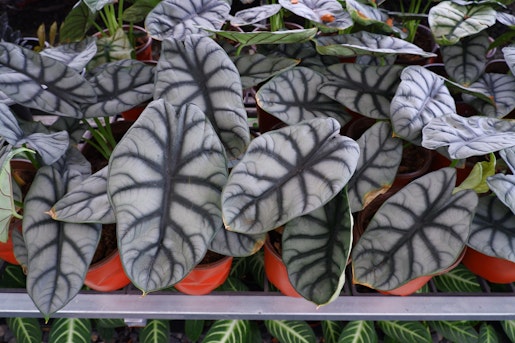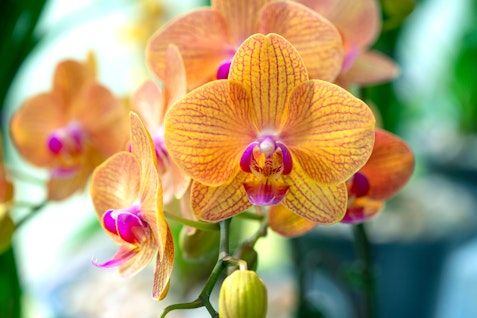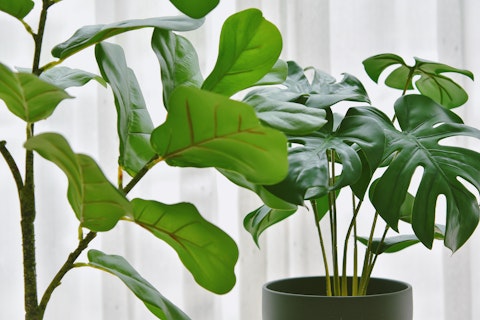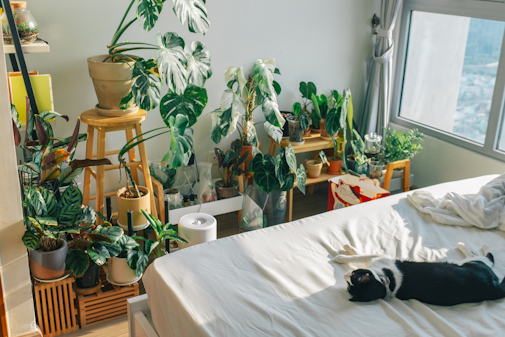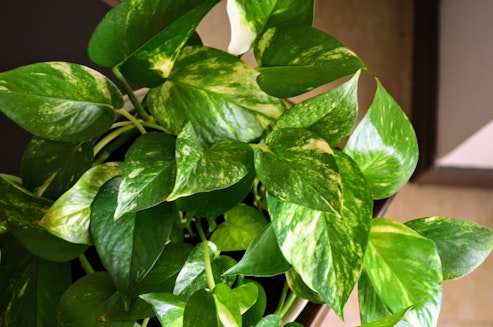
- Home
- The 'F' Word - a discussion on fungal disease in houseplants
Plant Knowledge
The 'F' Word - a discussion on fungal disease in houseplants
20th August 2021
Hannah Cockett
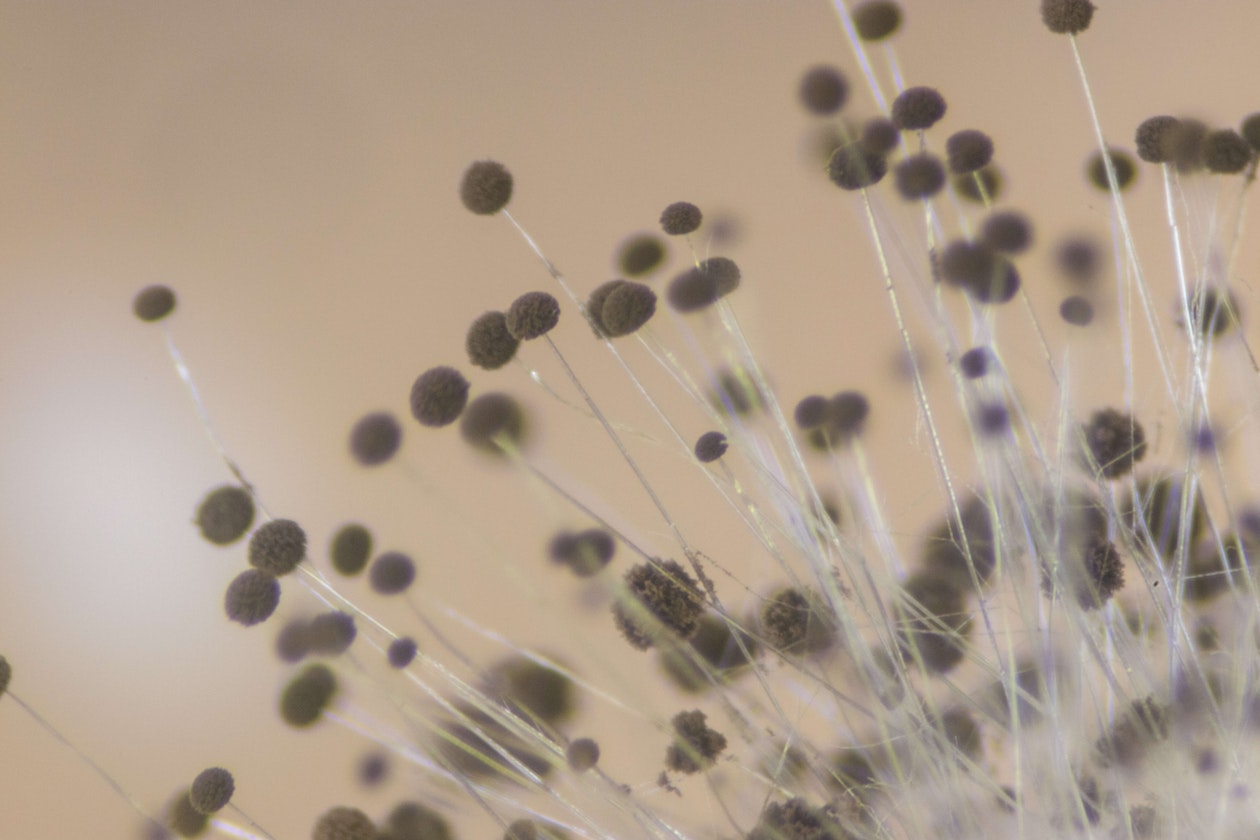
The ‘F’ word.
by Hannah Cockett (@plantcreeep)
‘Fungal disease’ is a phrase popping up more and more frequently within the plant community. Whilst in some cases fungal disease may be the cause of leaf blemishes or declining plant health, I’m also cautious of how frequently people seem to be jumping to this conclusion. Fungal disease in plants is most definitely something to be aware of, after all, fungi are the most common infectious plant pathogen. However, there are many other factors to consider when it comes to diagnosing plant problems. Jumping to the conclusion that those weird looking marks on your leaves are fungal can prevent the correct care being applied (if care is even needed), allowing damage to plant tissue to continue, and in some cases the application of fungal treatments when not actually required can do much more harm than good.
Plants most definitely do get disease, and this is widely known amongst houseplant enthusiasts, but what causes plant disease? Firstly, plant disease, just like in humans can be classified as infectious, or non-infectious. Infectious plant disease is caused by a pathogen, such as fungus, bacteria, virus, nematode, or even by parasitic plants. Non-infectious disease is caused by providing an unfavourable growing environment, such as the presence of toxic chemicals in soil, or an incorrect soil pH, but are non-transmissible between plants, although if multiple plants are exposed to the same poor environmental conditions, they may all be affected similarly.
Fungal disease, as the name suggests, is caused by fungi. Fungi are the second most species rich organism on earth after insects. Currently there are over 144,000 species identified yet estimates on the true number of species in existence ranges widely between 2 to 12 million! Fungal species have been found in almost every environmental niche worldwide, including air, soil, freshwater, and even oceans. Even one human breath can contain on average between one to ten fungal spores! When we think of fungi, our brains probably automatically jump to images of mushrooms, which are the fruiting bodies of fungi and yet fungi are incredibly diverse, and can be single celled, or complex multicell organisms. They play a key role within ecosystems, acting as decomposers, mutualists, or pathogens. Many are beneficial to our very existence, for example yeast is used in bread making and penicillin is used in antibiotics, but they can also be detrimental, causing sometimes fatal disease in humans, and this is true when it comes to our plants too. In fact, over 20,0000 known species of fungi are parasitic and can cause plant disease. Of course, not all 20,000 species out there can infect your favourite house plants, some are species specific, infecting only one specific species of plant, out of the approximately 400,000 known plant species! However, fungi are the most diverse group of plant pathogens and account for 70-80% of all global plant disease. Despite the many pathogenic fungal species, there are also many species that can be beneficial to plant health that actively support growth and development. Mycorrhizal fungi form a symbiotic relationship with plant roots and are effectively an extension of the plants root system, providing the plant with additional access to nutrients and water, with more than 95% of terrestrial plant species form a symbiotic relationship with beneficial mycorrhizal fungi.

So how do plants that seem perfectly healthy suddenly develop fungal disease? Spores can survive dormant yet viable on living or dead tissues for many years, using self-inhibitors which prevent germination until the perfect conditions are provided for them to proliferate. Fungal spores are also spread through wind, water, and soil whilst some are also specialised to be spread through insect vectors. There may be pathogenic fungal spores lurking in your soil just waiting for the perfect moment to germinate or spores could be carried in on the breeze through open windows! Once a spore comes in contact with a plant, providing the conditions are right, there are a variety of methods spores use to infect plant tissue. Some will penetrate the living tissues, directly entering epidermal cells, whilst others can extend hyphae (collectively called mycelium) on top, between or even through plant cells. A large variety of fungi are only able to colonise a plant through an already open wound, such as those caused by pests or during pruning, others will gain entry through a natural opening, such as stomata, and some fungal spores secrete a soup of enzymes that effectively digest the protective cuticle of the plant allowing the spore access.
Based on the strategies used to gather nutrients from a host plant, plant-pathogenic fungi have been classified as biotrophs, hemi-biotrophs, and necrotrophs. Obligate biotrophic fungi can only feed on living host tissues to adequately meet nutrient requirements and complete their life cycle. They use a complex structure called a haustoria, which is a specialized appendage, designed to grow within host cells to steal nutrients from the host. It has also become evident that these haustoria not only function as feeding structures, but also act as secretion sites for effector molecules to be transferred into the host which aid in pathogen colonisation and suppress the host plants immune system. Although these biotrophic fungi may cause some unsightly lesions, they alone aren’t likely to kill your plant, they need it alive! Instead, over time they weaken the plant, which makes it more susceptible to attack from other pathogens such as bacteria and viruses, or from pests, which when combined can lead to the death of the plant. Necrotrophic fungi on the other hand use toxic molecules and enzymes to subsequently trigger cell death in the host plant and then consume this dead tissue for their own growth. Between these two extremes, there’s a wide range of heminiotrophic fungi that begin their invasion with an initial biotrophic phase, then once this has progressed, is followed by a transition to the necrotrophic phase.

However, it’s not all bad news. Just like us, plants have an immune system, which can help prevent infection. The immune system uses immune receptors to detect pathogen invasion to begin the appropriate immune response. After the initial detection of a pathogen, both local and systemic reactions are triggered. Any perceived pathogens lead to the reinforcement of plant cell walls by callose deposition, changes in hormone biosynthesis and the production of antimicrobial compounds. In many cases these defences are enough to halt or at least slow the invasion of a pathogen. However plants in poor health, such as those that have been through a period of stress, ie, a deficiency or excess of water, low or high temperatures, high salinity or nutrient deficiencies may have weakened immune systems, making it much more likely that disease is able to take hold.
Unfortunately, while many of our plants love high humidity levels and we strive to provide it, field studies have shown it’s also the single most important factor when it comes to influencing the occurrence of fungal disease plants. High relative humidity combined with several hours of free surface water are critical for most fungal spore germination and successful infection. Additionally, infection, (the initial invasion of plant tissue) and disease (the expression of lesions and or tissue necrosis) by fungi are favoured by temperatures between 15-40 degrees Celsius. Field studies have shown that low humidity and extreme temperatures, high or low, inhibit growth and spore germination. Of course, if we keep our plants in these extreme temperatures to limit the chances of fungal infection, they’d just die anyway! So, what preventative measures can you implement to reduce the chances of fungal disease?
Firsty, it’s essential you continue to give your plants the conditions they need even if this does mean raised humidity levels and warmer temperatures, as providing your plants with what they need means they’ll be healthy, and healthy plants are better equipped to fight disease. Before going into full panic mode, ask yourself about your growing environment. Have temperatures dropped suddenly, have you perhaps been a bit too generous with water, or perhaps you’ve not fertilised for a few months? Ensure that while providing the necessary higher levels of humidity for many plants, you also provide adequate air flow, helping to prevent the chances of standing water on leaves. Many people like to mist their plants to raise humidity although this is typically a more short-term solution, unless the plants are in a smaller enclosed space. If you do choose to mist your plants, then be carefully to only mist lightly and avoid water pooling on leaves whilst also providing good airflow.
As mentioned, fungal spores are spread easily, often in water, soil, and on the wind. There is so much waste when it comes to gardening, indoor and out, and so of course I am a big advocate for reusing things as you go, such as pots, trellises and even moss, but to reduce the chances of facilitating the spread of infectious disease it is important to consider sterilising items between use.
Lastly, fungal spores are everywhere! It’s highly likely you have plants right now that may have dormant fungal spores within their soil, are busy fighting fungal pathogens or living in harmony with beneficial fungi and you just don’t know it. Keep an eye on your plants, monitor their growth and keep an eye on any leaves that you notice have developed unusual lesions or spotting. Whilst it’s good to be mindful that fungal disease can affect your plants, also bear in mind that a blemish, old or new, does not automatically mean fungal disease (or any disease for that matter)! Plants are living beings, they can get funny little bumps and marks occasionally, just like us and they can’t always be explained.
If you’re confident that your environmental conditions are ideal, and what you’re dealing with is indeed something out of the ordinary that can’t be explained then how do you identify a fungal infection?
The spectrum of fungal disease symptoms is truly enormous. Symptoms can vary not only between plants but also due to differences in environmental conditions. It’s also possible that there may be more than one disease present at one time, as plants suffering from one disease are more susceptible to others, further complicating diagnosis. Thankfully there is no known fungus that can cause disease on all plant species. Although some do have broad host ranges, many are very limited in the range of species and even cultivars they are able to infect, known as ‘host species specificity’.
Whilst there are many blogs and forums offering suggestions on which fungal disease is affecting our favourite houseplants, to my knowledge there are no published scientific papers on fungal disease affecting the more commonly available houseplants. Often symptoms alone, even to the super observative plant hobbyist (me included!) do not provide enough specific information for you to isolate the exact cause of disease, and no matter how confident you might be that you’ve identified the cause correctly, unless you send infected tissue to a lab for analysis then you are unlikely to ever know! Instead of me trying to suggest exactly what fungal species may be causing disease symptoms, due to how varied symptoms can be and to avoid spreading misinformation I’ve instead briefly highlighted some of the more common signs of fungal disease.
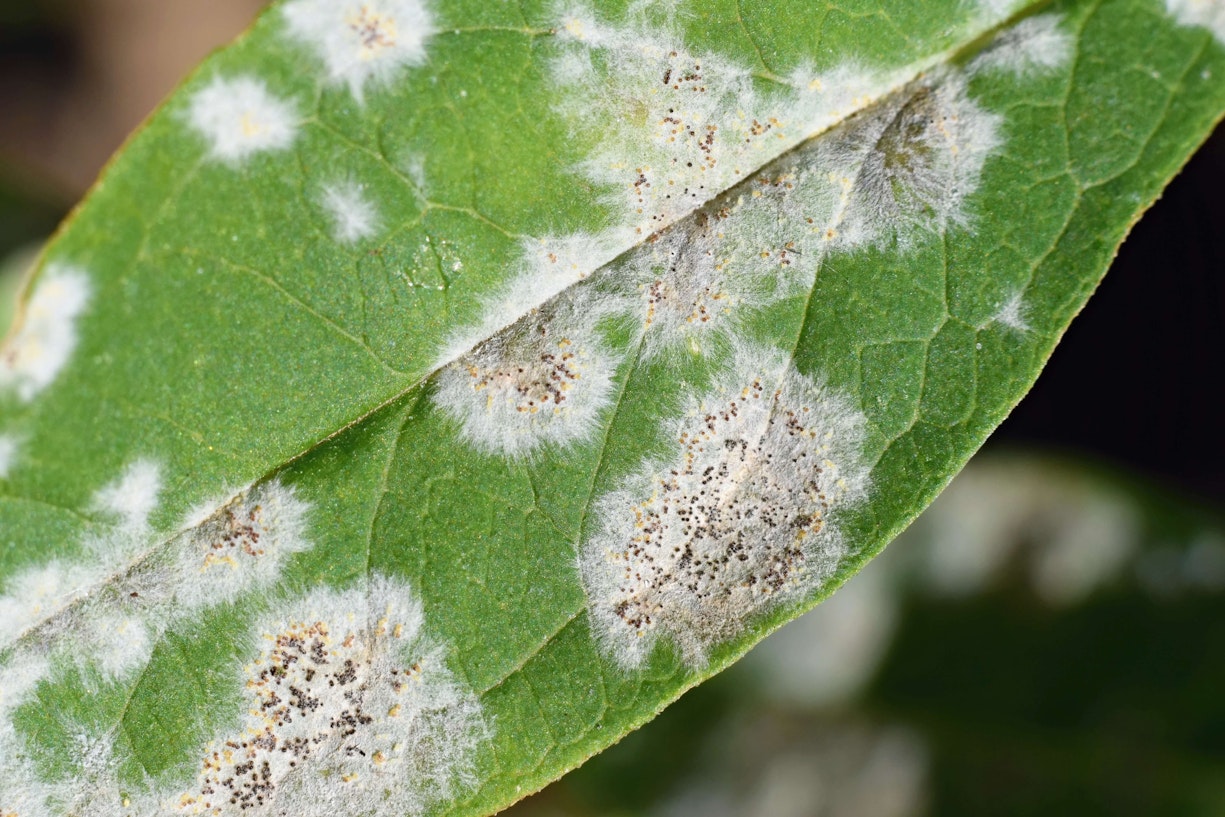
The following are all more commonly seen symptoms of fungal disease;
Fungal leaf spots: These can vary in size and can be circular or irregular in appearance. There may be zones of different colours noticeable, giving the spot a bull’s eye like effect, or they can be one solid colour. Fungal disease is not limited by leaf veins. These spots may spread extremely rapidly or encroach slowly. Multiple spots can begin to merge and if left untreated can result in leaf death.
Spore presence: fungal disease may become apparent due to the presence of spores, typically seen in dead tissue on a leaf. Other spores can present as bright ‘rust’ coloured patches which when wiped with damp tissue leave behind a coloured residue.
Leaf distortion: Leaves becoming elongated, curled, blistered, or thickened, but these can also be symptoms of bacterial and viral disease, as well as pests!
Powdery leaves: Powdery, dusty, mycelial masses can form on leaves, impacting on the plants’ ability to photosynthesise and eventually causing leaves to yellow and die. Typically, this begins on the upper surface of newer leaves before spreading.
Root rot: Pathogenic fungi can be a cause of root rot, although symptoms can be difficult to discern from rot simply caused by waterlogged, oxygen deficient soil. Confusingly, fungal species that cause root rot also thrive in waterlogged soil!
Wilting: This can occur suddenly with the main stem beginning to lose rigidity. Leaves can turn light green to greenish yellow to brown. Eventually the entire plant may collapse and die. Wilting can also be a symptom of root rot (caused by either over watering or fungal infection).
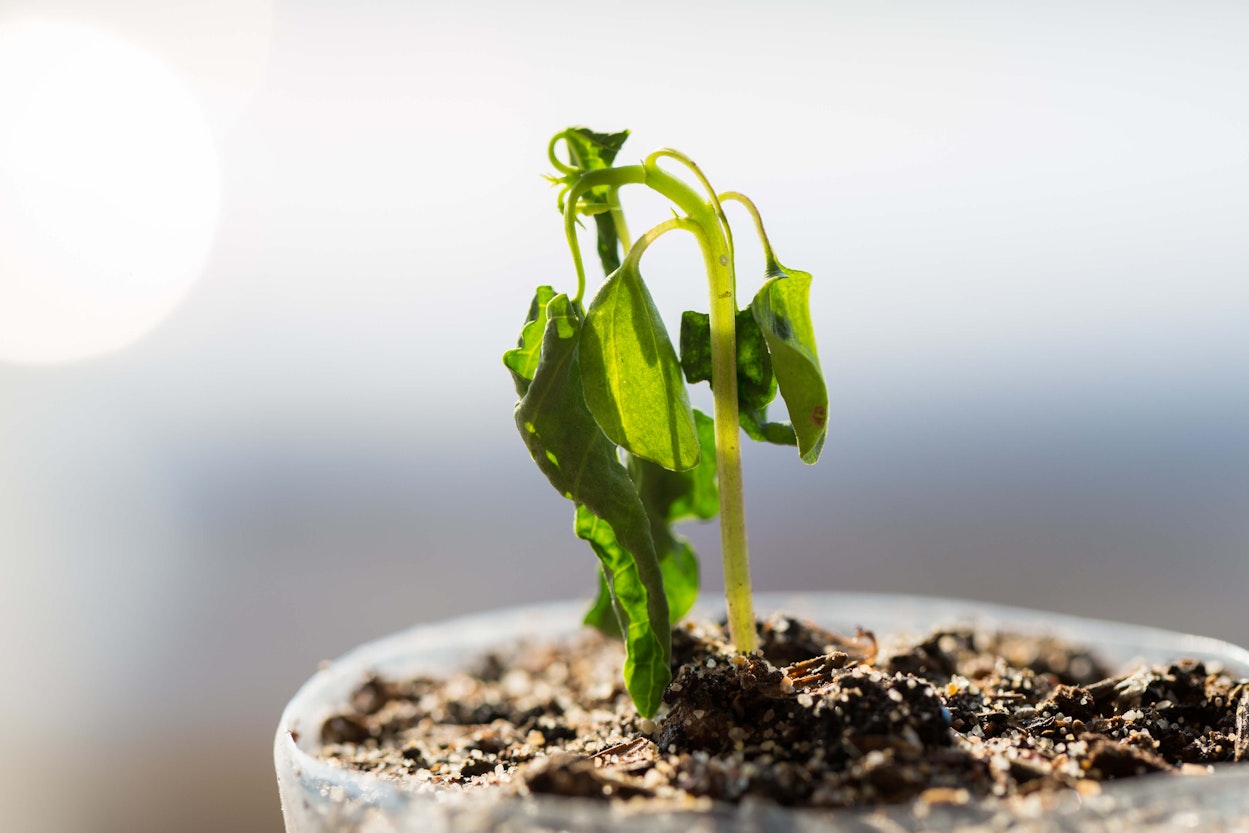
As mentioned, scientific research into specific fungal disease affecting houseplant genera is basically non-existent, instead it is mostly focussed on crop plants rather than ornamental plants, as pathogenic fungi have a huge impact on global food production. Often making a diagnosis will simply involve some of your own research combined with some guess work!
If you believe you may have plants with some form of fungal disease, you might be tempted to simply buy an off the shelf fungicide. But before you get too spray happy, consider that these can drive fungal resistance when not used correctly, similar to the way incorrect antibiotic use can drive antibiotic resistance in humans. Many can also have wider implications on the environment. Although they are not designed to target insects, reports show that they can affect food consumption, metabolism, and immune response in bees (and likely many other important pollinators), and we should all be trying to save the bees! Maybe you don’t have bees in your house, but fungicides, even on indoor plants, should ideally be applied outside, or at the very least, in a well-ventilated area. It is also vital you remember that these fungicides do not simply target ‘bad’ fungi, they have the potential to affect every fungal species they encounter, many of which may be beneficial to your plant. Plants are not sterile beings and are covered in (and full of!) microorganisms, living in relative harmony, and any topical applications can upset this symbiosis, potentially resulting in even more damage taking place.
I suggest researching the use of either a copper or sulphur-based fungicide. Although I’m sure they still have their drawbacks, these are generally deemed more natural and less toxic. Other people use baking soda mixed with water and soap as a preventative measure, as this creates an alkaline environment which inhibits the germination of fungal spores, which typically prefer a neutral to acidic germination site. Most importantly, however you use to treat your plant, be cautious. Test sprays on older or more hidden leaves as a kind of patch test to determine if there could be an adverse reaction. Any instructions provided with commercial sprays should be followed accurately and treatment should be completed as instructed, even if you notice an improvement after only one application.
This blog has not been made to scare you, plants are living beings and occasionally things go wrong. Plants want to live, no matter how hard they might try to convince us otherwise! Fungal disease isn’t necessarily a death sentence for your plant and many plants are able to halt infection naturally through implementation of their immune system. If you observe your plants carefully, you’ll be able to successfully spot and treat any disease before it causes too much damage. As with many things, prevention is of course better than cure, and if you continue to provide your plants with ideal conditions, and keep them healthy, you’ll significantly reduce the risk of disease, fungal or not, from setting in.
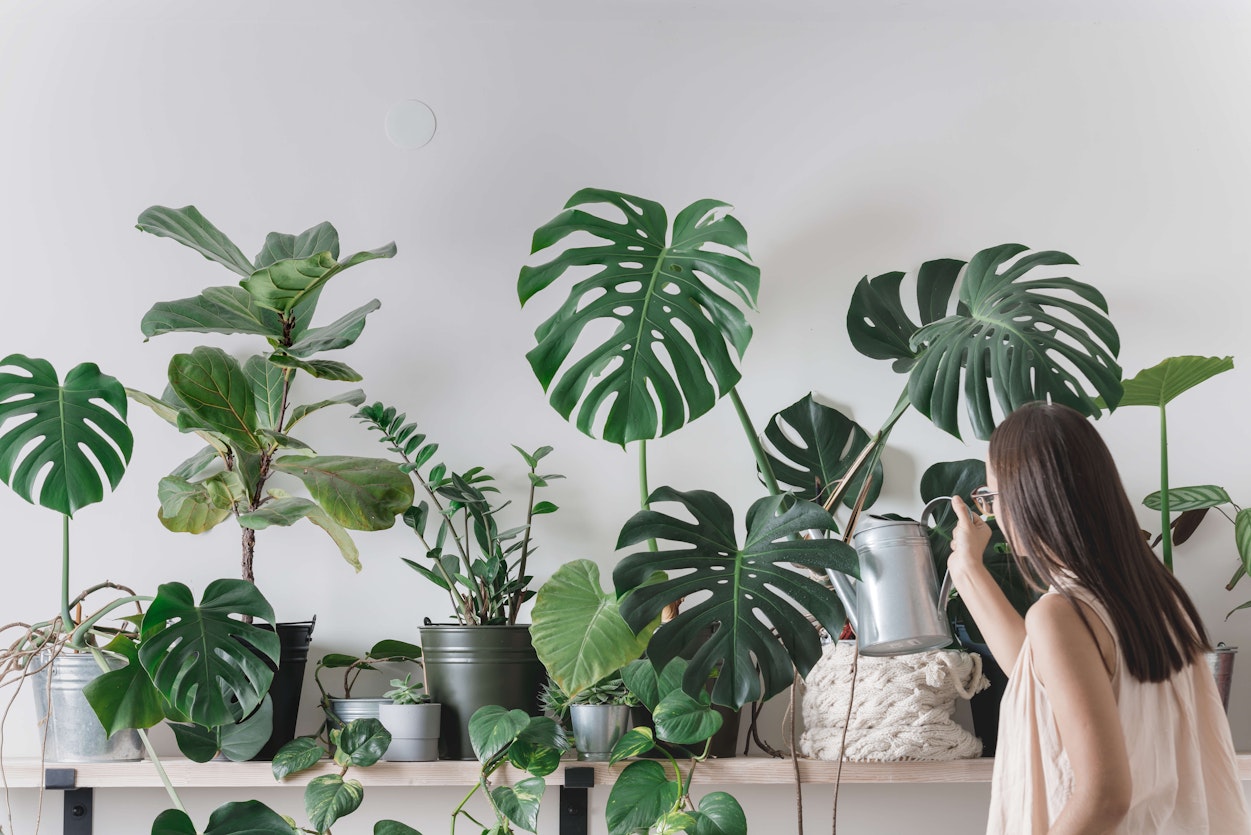
References
Chaudhry, V., Runge, P., Sengupta, P., Doehlemann, G, Parker., Kemen, J. (2021). Shaping the leaf microbiota: plant–microbe–microbe interactions, Journal of Experimental Botany, 72, 1, 36–56.
Jones, J., Dangl, J. (2006). The plant immune system. Nature, 444, 323-329.
Li, J., Cornelissen, B., Repm M. (2020). Host-specificity factors in plant pathogenic fungi,n Fungal Genetics and Biology, 144.
Ray, M., Ray, A., Dash, S., Mishra, A., Gopinath Achary, K., Nayak, S., Singh, S. (2017). Fungal disease detection in plants: Traditional assays, novel diagnostic techniques and biosensors, Biosensors and Bioelectronics, 87, 708-723.
Rodriguez-Moreno, L., Ebert, M., Bolton, M., and Thomma, B. (2018). Tools of the crook- infection strategies of fungal plant pathogens, Plant Journal, 93, 664-674.
Talley, S., Coley, P., Kursar, T. (2002). The effects of weather on fungal abundance and richness among 25 communities in the Intermountain West. BMC ecology, 2, 7.
Van Kan, J. (2006). Licensed to kill: the lifestyle of a necrotrophic plant pathogen, Trends in Plant Science, 11, 5, 247-253.
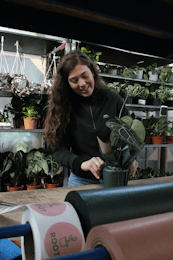
Hannah Cockett
Hannah started off as a customer at Root, she talked with Lisa about her plants, her favourites and those she wished to own. Her love of plants and her enthusiasm shone through. When there was an opportunity to employ a new staff member, Lisa knew Hannah would be perfect for the role. Hannah has a degree in Zoology and a post graduate diploma in Environmental Forestry. She now works in the environmental sector at the Borders Forest Trust. Hannah is completely enamoured with the natural world, spending downtime growing fruit and veg, exploring the woods around her, trail running and hanging out with her partner and pets.
More by Hannah CockettRelated Articles
View all articles
